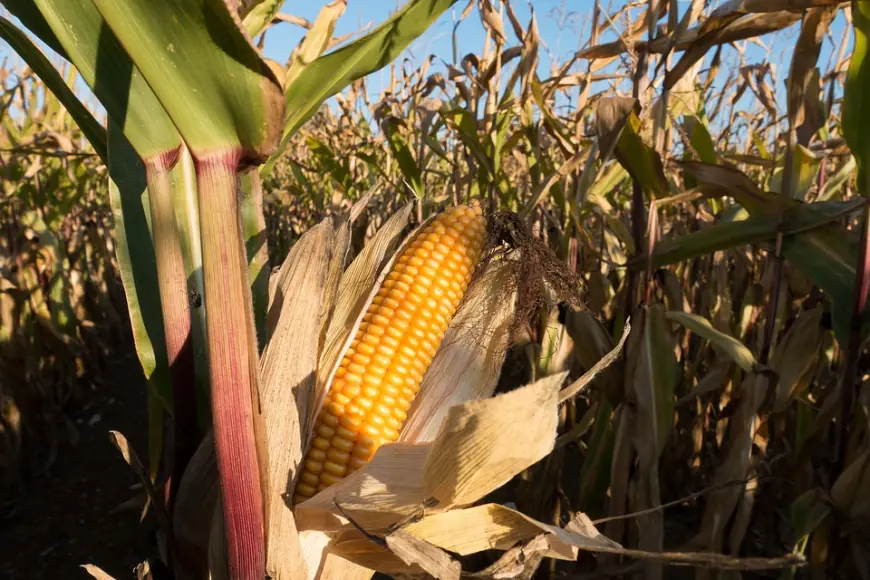Corn Cultivation Guide in India: Everything You Should Know
Corn, more commonly known as maize, is a cereal plant that produces large seeds called kernels. The kernels from the corn are used for food products such as cornmeal, popcorn, and corn syrup

Corn, more commonly known as maize, is a cereal plant that produces large seeds called kernels. The kernels from the corn are used for food products such as cornmeal, popcorn, and corn syrup. It's also used as animal feed for cows, chickens, and other livestock. Apart from that, it is majorly used in the manufacturing of biofuels. This is one of the most popular crops in the world. It is cultivated in many different countries and is used in many different ways, like food, animal feed, and even fuel. So, let's take a look at this journey on how corn is farmed and the whole process involved in growing such an important crop.
How Corn Is Grown: The Farming Process
Farming corn is a simple process that can be divided into a few key steps: soil preparation, planting, care during growth, and harvesting. Let's go through each step in detail.
Land Preparation
Soil must be prepared before planting the corn. This is considered to be one of the critical farming processes. The soil needs to be loose and well fertile for the corn plant to grow strong and healthy.
Before sowing the crop, most farmers clear weeds or leftovers from the previous harvest in the field to minimize competition for nutrients. Farmers prepare the soil by using tractors. The most commonly used for preparing soil is the Sonalika Tractor. It facilitates ploughing, tilling, and levelling of the soil so that the soil becomes loose and soft for sowing. Also, it facilitates the mixing of compost or fertilizers with the soil. These nutrient-rich components add to the growth of healthy corn plants.
Farmers generally add fertilizers after tilling the soil. These improve the quality of soil, especially when the soil lacks the most important nutrients: nitrogen, phosphorus, or potassium. Fertilizers may come in various forms: liquid, granular, and even manure.
Plantation Process
Once the soil is ready, it's time to plant the corn seeds. Corn grows well in warm conditions, and thus planting usually occurs once the soil temperature has risen to about 50 to 60 degrees Fahrenheit or 10 to 15 degrees Celsius.
Farmers plant the corn in rows, so it's easier to care for them later. Seeds are placed in the soil at a certain depth of about 1 to 2 inches deep and space about 6 to 12 inches apart. That distance provides enough room for the plants to grow tall and strong without competing for too much sunlight and nutrients.
The planting process is normally performed with a seed drill or an attachment on a tractor called a planter. The seed is thus planted at the required depth and spacing by this machinery, which makes it go faster and more efficiently than performing it manually.
Growth and Care Management
Once the corn seeds have been planted, the crops start sprouting. It is a warm-weather crop, and thus, the more sunlight and water provided, the better. During its growing season, one needs to check on corn plants to identify all those pests, diseases, or other factors that are impeding its development.
The most common way farmers irrigate is through irrigation systems to ensure the plants receive enough water, especially when it is scarce due to inadequate rainfall. Corn requires a lot of water in the initial growth stages and when the ears of the plant, which carry the kernels, are forming.
Another important aspect of corn care is weed control. Weeds consume all the nutrients and water intended for the corn plants. They are usually removed through herbicides or mechanical tools. Also, farmers may need to check on insects or rodents that might damage the crop.
Once they grow, the plants will also require nutrients. Therefore, fertilizers are used at different stages of growth to ensure that corn is exposed to the right amounts of nutrients at the right times.
Harvest Time
When the corn gets fully grown, then that's when it needs harvesting. When the corn's kernels become firm, the outer husk turns brownish and dry, indicating they are ready to be collected. The farmer would pay keen attention to the plants for all signs of maturity before actually taking them out for harvesting.
On small farms, the harvesting of corn can be done by hand, while on large farms, this is usually done with the help of a specialized machinery called a corn harvester. This machine helps in removing the corn kernels from the ears and separates the kernels from the cob. The harvested kernels are stored in silos or grain bins to be dried and processed.
Corn is ready to use for the production of both human and animal food upon harvesting or for manufacturing products like corn syrup and ethanol-a biofuel.
Challenges in Corn Farming
Corn farming is not without its challenges. Weather conditions can be unpredictable, either too much rain or a drought. Climate change makes weather patterns more uncertain, and this can affect corn yields.
Pests and diseases are other challenges. Damaging pests like corn borers and damaging diseases like corn smut reduce the yield from these plants. Farmers should always be cautious and, in some cases, control these pests with pesticides and other measures.
The Final Words:
Corn farming is a complicated process that requires careful planning and hard work. It begins with preparing the soil to make sure the plants get enough water and nutrients. Every step is crucial for a healthy crop. The farmer may face challenges along the way, but with the right tools and knowledge, he or she can successfully grow corn that feeds people and animals alike.
Investment in the right equipment is important for farmers. Buying a tractor is costly, which is why most people opt for tractor loans. If you want to buy a tractor, you must consider the Tractor Loan Interest Rate. This can help you understand the cost of borrowing and make an informed decision about financing your farming equipment.
What's Your Reaction?
 Like
0
Like
0
 Dislike
0
Dislike
0
 Love
0
Love
0
 Funny
0
Funny
0
 Angry
0
Angry
0
 Sad
0
Sad
0
 Wow
0
Wow
0
























































